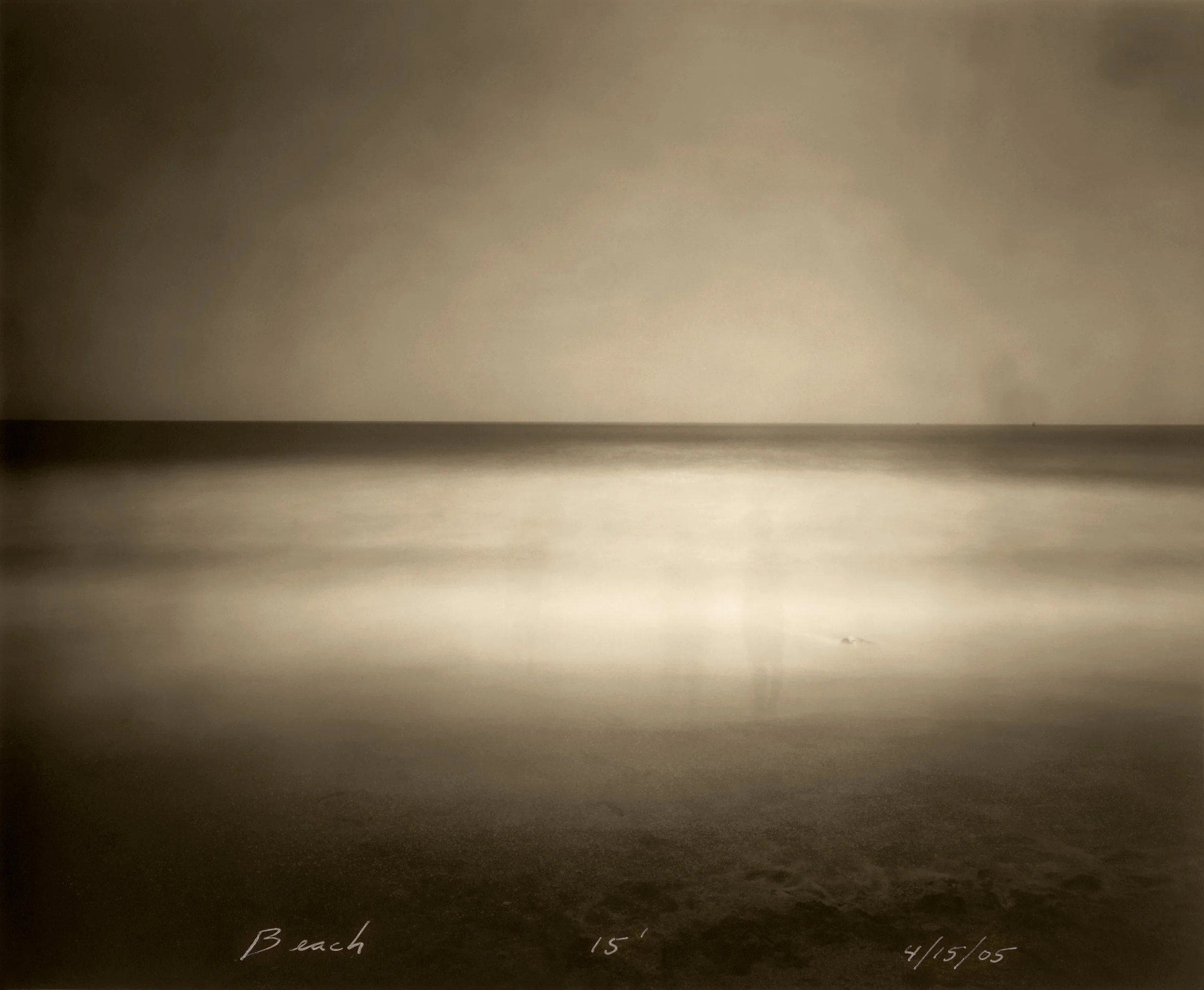2003-2005
TIME STUDIES
In 2004 I began making a group of small-scale photographs that I thought of as "time and space equations." They progressed out of a desire to do a project using film and to explore what I thought film could do better than nascent digital technologies. My thoughts were influenced by earlier work in rephotography and some unresolved questions about the relationship between time and change.
For this series I wanted to focus on two re-space lated questions: How long is a "moment" in time, e to do and how do photographs express duration or rought lengths of time? In practice, the moment of any photograph is a fixed length of time corresponding to the exposure of the film to light. Usually this is instantaneous, often faster than the eve me can see. But the camera is also capable of describing events that occur too slowly for the eye to see, and photographs can show us a world that exists virtually unobservable within conventional experience. In the world of the camera, a period of long duration or multiple points in time may exist side by side as the expression of one moment on a single sheet of film.
These pictures resulted from exposures ranging from ten minutes to two days. They may represent the length of time it took for an everyday event to occur or the combination of multiple gazes at a changing event or object or the slow awareness of the normal passing of a celestial day or night. In these cases the experience of time passing takes place in ways that are different than how time is measured by the methodical movements of a clock or the linear regime of a calendar.
Photographs from this series are typically sized at around 7×9 inches and are printed borderless. Each image is printed on black-and-white photographic paper, then toned to give it a slight color or sometimes a split of two colors. The series began during the period supported by a Guggenheim fellowship, and I worked on the series off and on for about two years.
2 Hours, 11/13/14
Beach , 15', 5/15/05
Moon and sun rising, 7:30 pm-9:45 am, 3/14-15/06
Eclipse of the moon
Black hole 1, ND
Moon at sunrise, 1/19/04
Ice ring, 11/20/04
One hour, fifty-second birthday, 9/9/04
The Muslims Fight Back history book, 12 hours, 5/04
News broadcast and one sitcom, 1 hour, 3 minutes, 4/16/05
Seven moons, 12/2/06
Moment of intersection, ND
.357 at Dusk, 10/10/04
Midday sunds, 11:00-4:30, 1/22/06
Walker Evans reflecting by birdbath, 9/11/04
One hour sun tracked through my birdbath, 11/04
Overnight, 10:25 pm-7:45 am, 4/18-10/05
Reading with glasses in a dark room, 9/9/06
35-minute nap, 9/11/04
Six quarter moons, 3/12/05
Two moons, 10/06
Two suns, 12/06
Imprint from bird hitting windows, 10/03
Water-damaged negative, wet year, ND
Not in Book

























